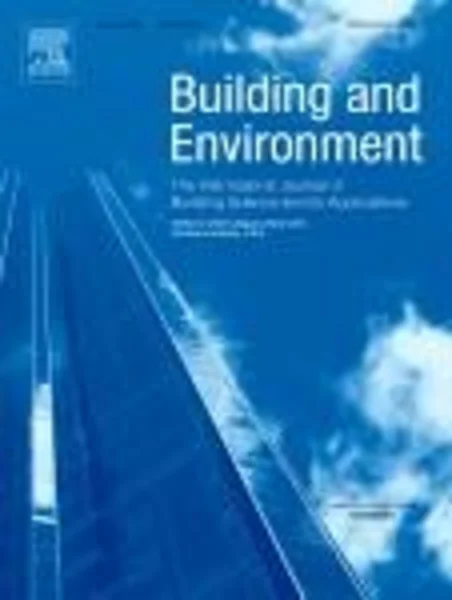-
development of new indices to assess the contribution of moisture sources to indoor humidity and application to optimization design: proposal of cri(h) and a transient simulation for the prediction of indoor humidity
جزئیات بیشتر مقاله- تاریخ ارائه: 1390/01/01
- تاریخ انتشار در تی پی بین: 1390/01/01
- تعداد بازدید: 512
- تعداد پرسش و پاسخ ها: 0
- شماره تماس دبیرخانه رویداد: -
many indoor and outdoor factors (e.g., the presence of occupants, hot-water supply equipment, the use of hygroscopic materials, and ventilation) contribute to indoor humidity. it is important to investigate and understand the contribution of each factor to indoor humidity and to establish an effective method for the design and control of indoor humidity. in this study, indoor humidity was treated as a linear summation of the contribution of various factors, all of which can cause an increase or decrease in indoor humidity. new indices for assessing the contribution of factors to the humidity distribution in a room are proposed as contribution ratios of humidity (cri(h)) 1, 2, and 3 which can be calculated based on computational fluid dynamics (cfd) simulations. furthermore, a transient simulation based on cri(h)1 and the contribution ratio of indoor climate (cri(c)) was developed to predict the indoor humidity distribution. a 100-day transient analysis was performed in a living room in which moisture-buffering materials were used. the simulation results were compared with those from a well-mixed zonal model and a cfd transient analysis to confirm the effectiveness of the approach. the analysis provided the three-dimensional spatial distribution of indoor humidity and temperature with good prediction accuracy. the calculation time was approximately equal to that of the well-mixed zonal model and much faster than that of the cfd transient analysis.
مقالات جدیدترین رویدادها
-
استفاده از تحلیل اهمیت-عملکرد در ارائه الگوی مدیریت خلاقیت سازمانی و ارائه راهکار جهت بهبود
-
بررسی تاثیر ارزش وجوه نقد مازاد بر ساختار سرمایه شرکت های پذیرفته شده در بورس اوراق بهادار تهران
-
بررسی تأثیر سطح افشای ریسک بر قرارداد بدهی شرکت های پذیرفته شده در بورس اوراق بهادار تهران
-
بررسی تأثیر رتبه بندی اعتباری مبتنی بر مدل امتیاز بازار نوظهور بر نقد شوندگی سهام با تأکید بر خصوصی سازی شرکت ها
-
تأثیر آمیخته بازاریابی پوشاک ایرانی بر تصویر ذهنی مشتری پوشاک ایرانی (هاکوپیان)
-
مقایسه ی استانداردهای اورژانس مصوب وزارت بهداشت، درمان و آموزش پزشکی با اصول نظام ایزو 9001 ویرایش 2000
-
بررسی نیازهای آموزشی بیماران ترخیصی و رضایتمندی آنها از عملکرد آموزشی پرستاران در کرمان
-
نقش تعلق گروهی بر انگیزه پیشرفت تحصیلی دانش آموزان
-
بررسی آسیب های کروموزومی در لنفوسیت های کارکنان اتاق عمل ناشی از استنشاق گازهای بیهوشی به روش آنالیز متافاز
-
application of a force-based state space approach to geometrically nonlinear planar curved beams
مقالات جدیدترین ژورنال ها
-
مدیریت و بررسی افسردگی دانش آموزان دختر مقطع متوسطه دوم در دروان کرونا در شهرستان دزفول
-
مدیریت و بررسی خرد سیاسی در اندیشه ی فردوسی در ادب ایران
-
واکاوی و مدیریت توصیفی قلمدان(جاکلیدی)ضریح در موزه آستان قدس رضوی
-
بررسی تاثیر خلاقیت، دانش و انگیزه کارکنان بر پیشنهادات نوآورانه کارکنان ( مورد مطالعه: هتل های 3 و 4 ستاره استان کرمان)
-
بررسی تاثیر کیفیت سیستم های اطلاعاتی بر تصمیم گیری موفق در شرکتهای تولیدی استان اصفهان (مورد مطالعه: مدیران شرکتهای تولیدی استان اصفهان)
-
عدم شفافیت و اجتناب مالیاتی
-
به کارگیری مهاربندهای کمانش گریز در بهسازی قاب های خمشی فولادی
-
بررسی تأثیر نام تجاری و وفاداری برند در خدمات فن آوری
-
phatics - actual problems of linguistics uzbek research
-
performance of concrete mrf at near-field earthquakes compared to far-field earthquakes




سوال خود را در مورد این مقاله مطرح نمایید :